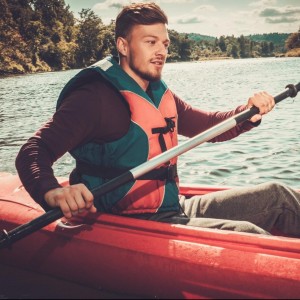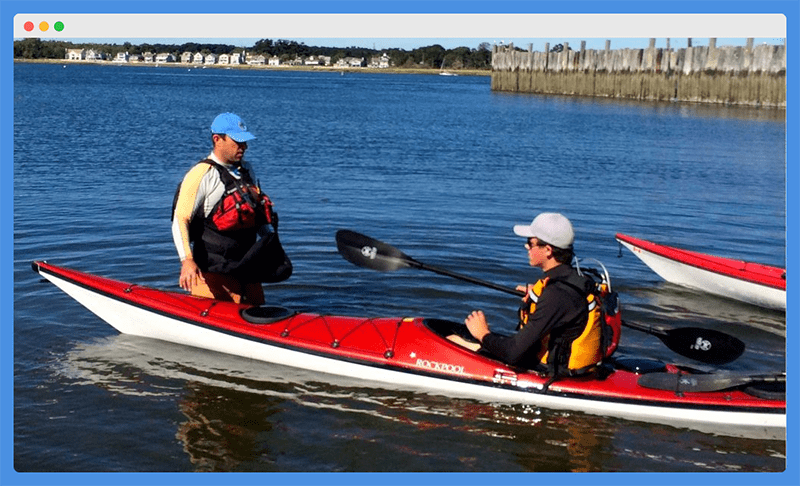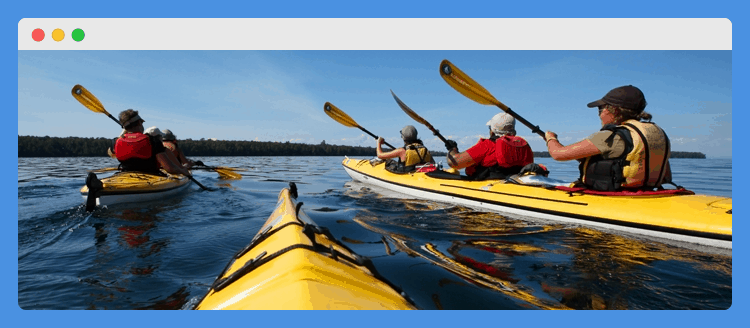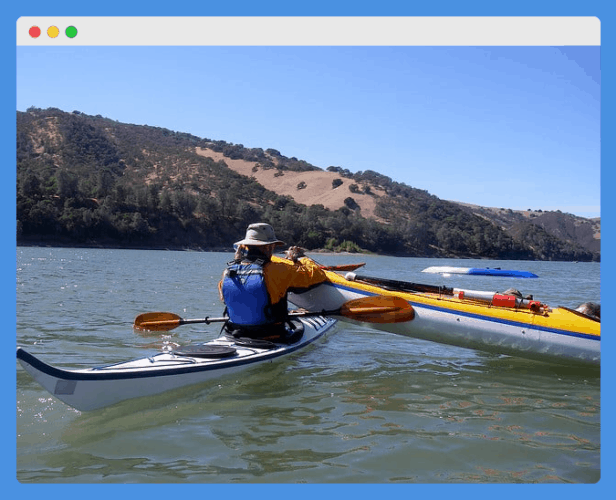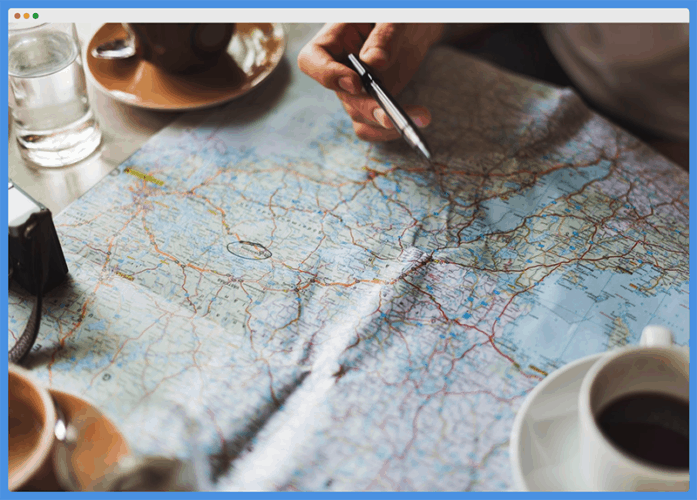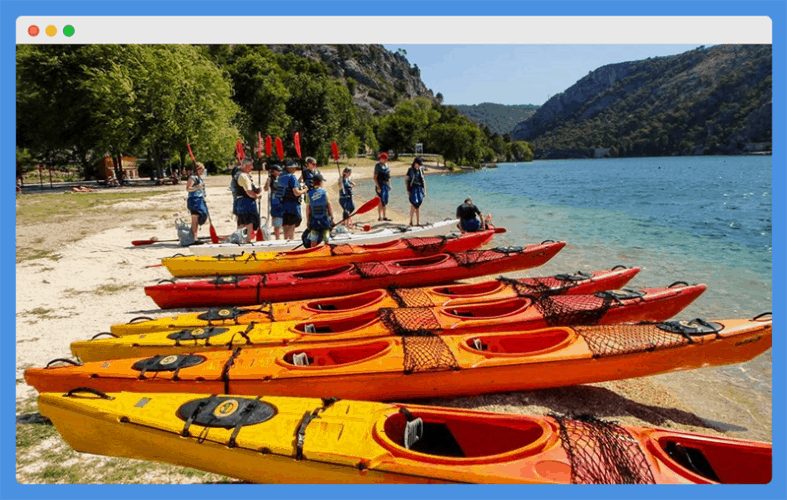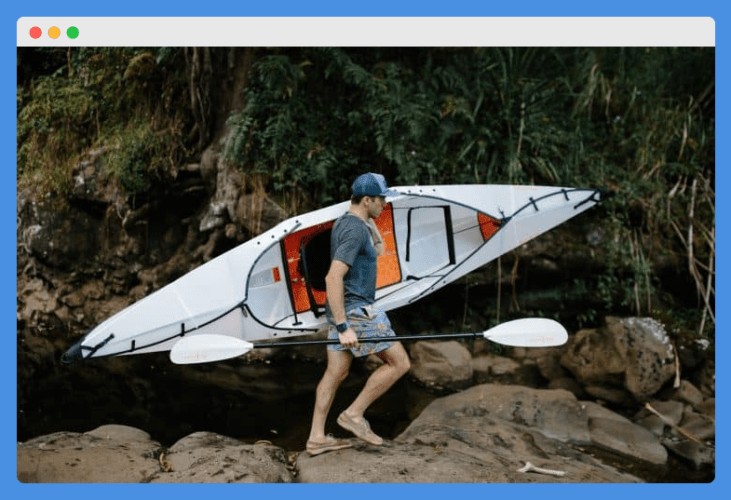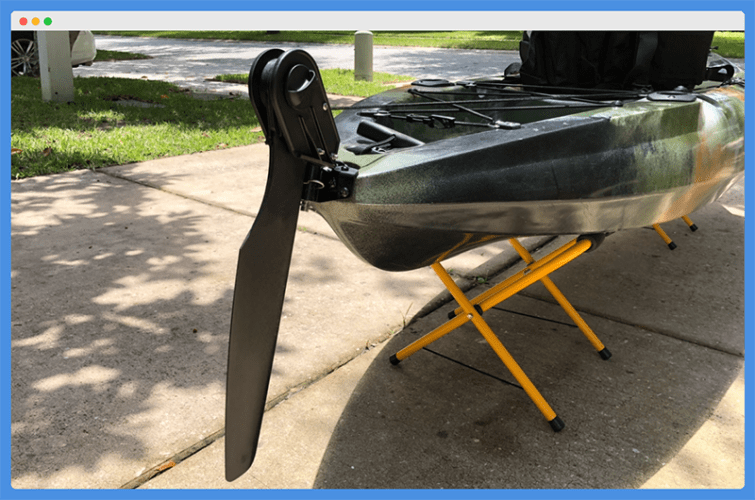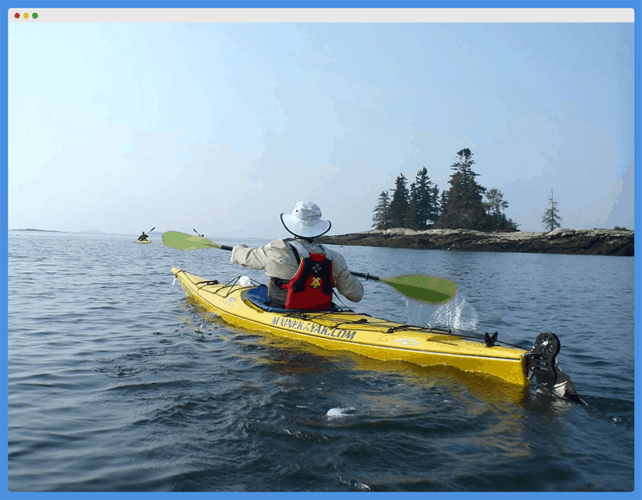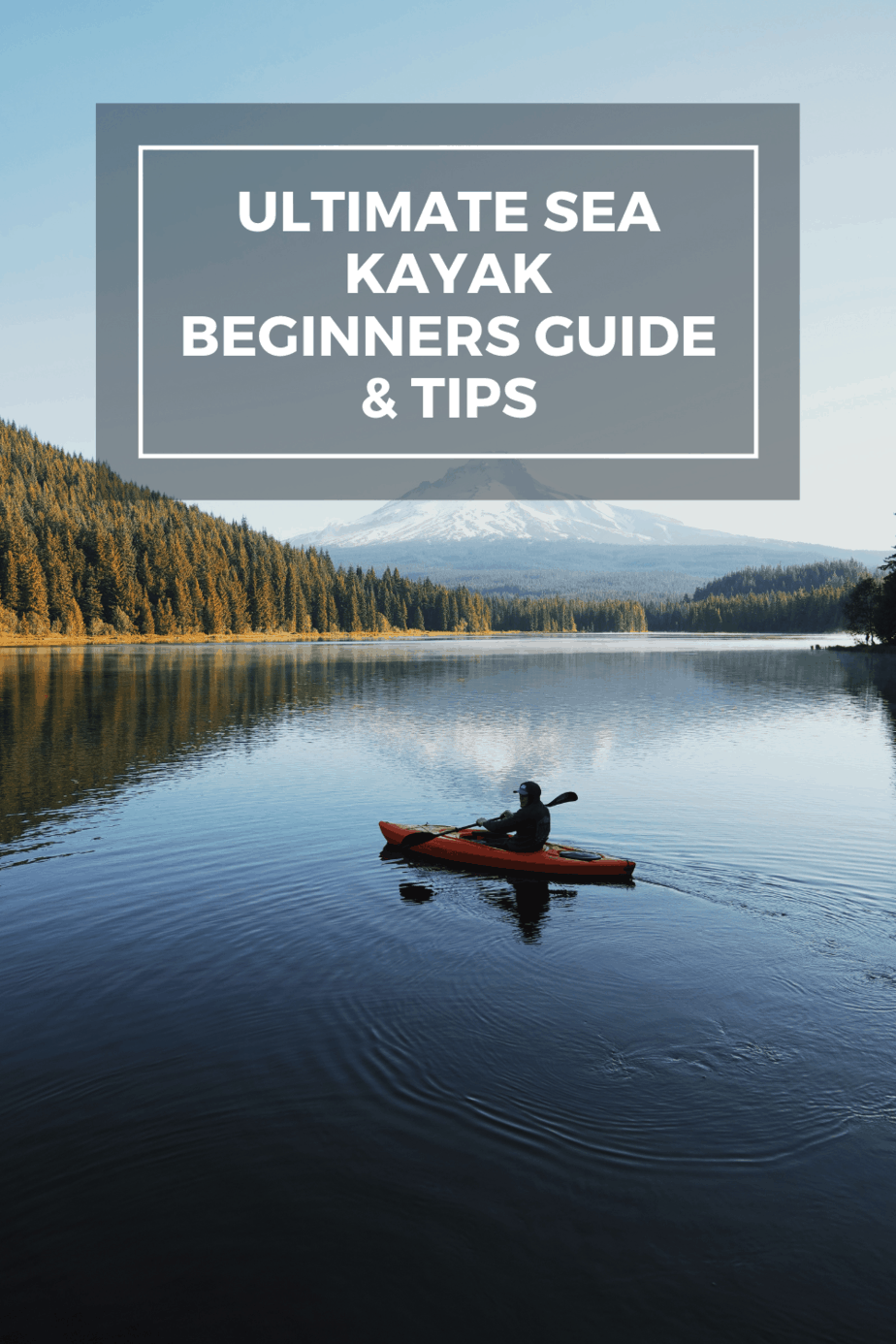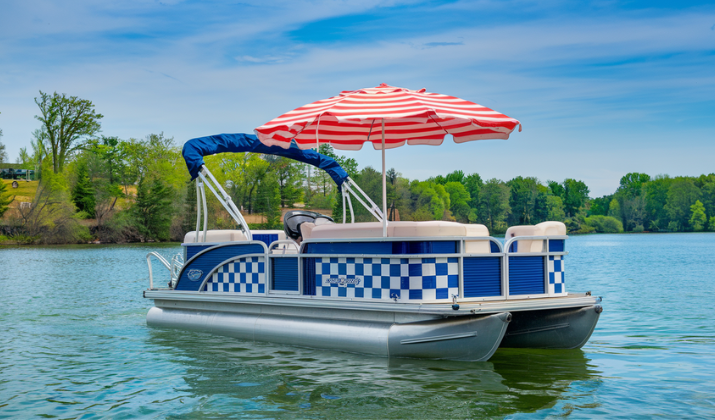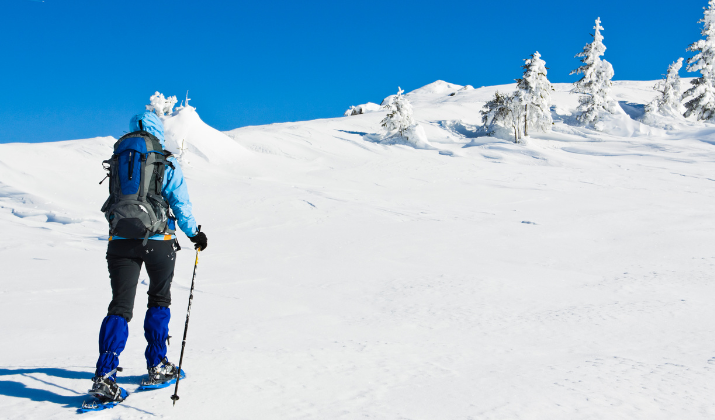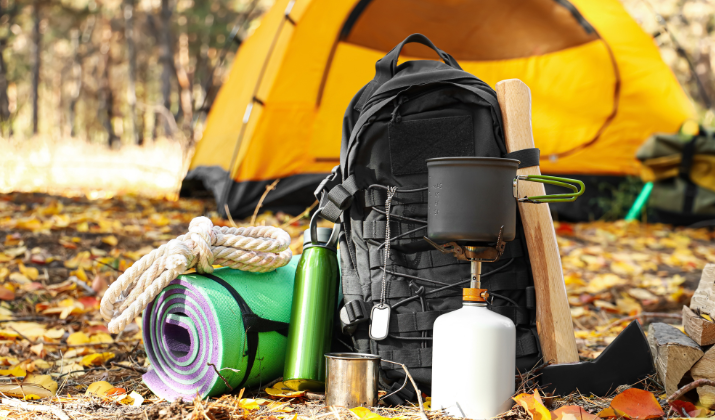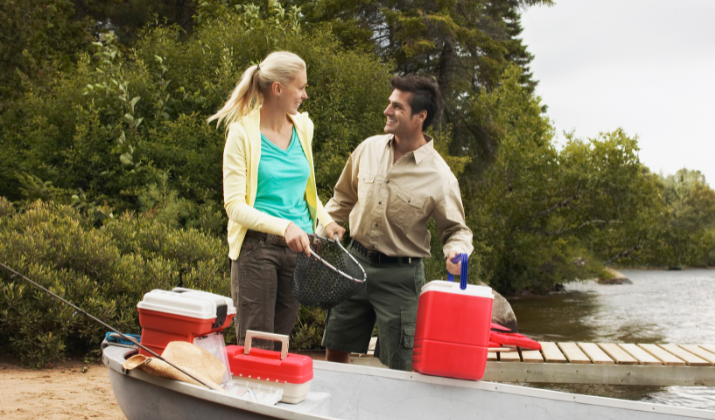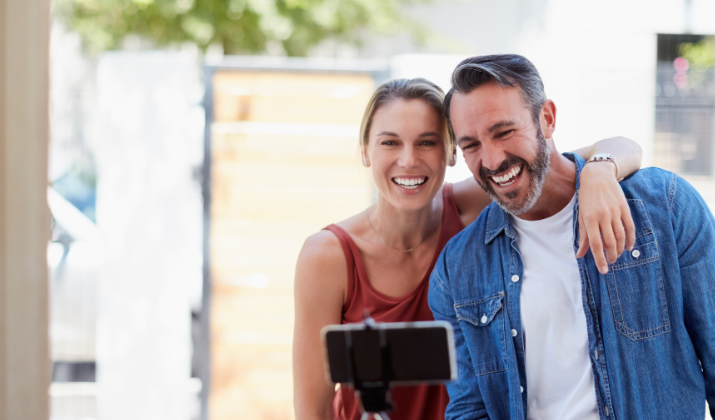Sea kayaking is an ancient past time for coastal dwelling communities. While many early humans relied on it as a means to fish for one of their main food sources, sea kayaking these days is much more recreational.
This sport offers exceptional wildlife viewing and access to spots that you can only get to via land on a motorboat. But when you’re first starting out, many sea kayaks can feel tight and unstable.
Additionally, there’s a lot to learn about currents, tides, and other ocean-specific environmental factors. That’s on top of simply learning how to operate one of the best sea kayaks for beginners.
You’ll need proper instruction before buying a sea kayak and setting out for your first paddle, but there’s also a lot you can learn before taking a sea kayaking lesson.
We’ve addressed the latter by compiling the ultimate sea kayak beginner’s guide and tips. Be sure to check out our Sea Kayak Buying Guide and choices for three Sea Kayaks for Beginners as well!
Jargon Buster
Before we get into more detailed tips for sea kayaking, we need to cover some important kayaking jargon. These are terms you’ll find later in the article, so let’s take some time to get familiar with them before moving forward.
Bulkhead
A bulkhead in a kayak is a watertight compartment that can be used for gear storage or to add buoyancy to the kayak’s design. Bulkheads are typically located forward or backward of the kayak’s cockpit.
Capsize
Capsizing is defined as flipping or rolling your kayak into an inverted position. This can be done intentionally but is more likely an accidental occurrence amongst beginners.
Skeg
A skeg is a small fin that gets mounted on the stern keel (underside) of a sea kayak. They have various methods of operation but serve to provide additional tracking ability in windy conditions or when paddling across a swift ocean current.
Swells
Swells are large, rounded waves that form in the deeper ocean through the conglomeration of smaller waves caused by wind action. When they hit the shore, these swells are responsible for the waves that we see when we arrive at most ocean beaches.
Sea Kayaking Tips
Kayaking on the ocean inherently brings more variables into the equation than paddling on lakes or rivers. So here are the most important tips to help you become a prepared and proactive sea kayaker.
Learning The Basics
There really is no substitute for taking a lesson when you’re first getting into sea kayaking.
Sure you can learn a lot by watching YouTube videos, but hands-on education and practice are really what you’ll need to build comfort and confidence.
The good news is that there are tons of outfitters and guide companies that offer sea kayaking lessons all over the world. The Kayak Academy, the American Canoe Association, and Mountaineers.org are just a few great resources for finding upcoming sea kayaking lessons in different regions.
When you’re learning how to sea kayak, make sure you’re not gripping your paddle too tight.
You should have a firm, but loose, grip so that your hands don’t fatigue too quickly and you don’t develop hot spots on the inside of your thumbs.
Beginners always have a tendency to focus on their arms and hands, as they’re the most obvious body parts responsible for operating a kayak paddle.
But proper paddling technique requires engaging your core muscles so that your arms don’t tire too quickly.
Focus on keeping your torso upright and gently twisting from side-to-side with each paddle stroke. This will help you engage your core and avoid overexertion of your arm and shoulder muscles.
The most important thing that beginners can do to remain stable in their sea kayak is to think about keeping your nose directly over your belly button.
Proper paddling technique does require a gentle core twist, but you should never be leaning too far side-to-side in order to get your paddle in the water, as this will increase your likelihood of capsizing.
Rescue Techniques and Emergency Maneuvers
An experienced guide once said, “It’s not a matter of IF, but it’s simply a question of WHEN.” This sentiment certainly applies to sea kayaking beginners that should learn various rescue techniques and emergency maneuvers before heading out on their own.
Arguably the most important emergency maneuver you should learn as a beginner is a wet exit. This is a technique for ejecting yourself from the cockpit of your kayak if you’ve unfortunately capsized.
Practicing wet exits in a pool or shallow body of water is a great way to get more comfortable with the technique.
Even before you learn how to re-enter a sea kayak, you must know how to get yourself out quickly if needed, both with and without a spray skirt covering the cockpit.
Another rescue technique that all beginner sea kayakers should get familiar with is the T-Rescue. This method requires two kayakers, but it’s a great one to practice along with a more experienced paddle partner.
It’s a useful technique for righting an overturned kayak and assisting a paddle partner back inside.
Before you take your paddle trips to the next level, it’s really important to be comfortable with several rescue techniques and emergency maneuvers just in case you need them.
Trip Planning
A lot of issues that new sea kayakers run into can be avoided with better planning and more thorough preparation. The best first step to planning for your paddle is to decide on a safe route.
As a beginner, it’s always best to plan a route that keeps you close to shore. This is actually a good recommendation for paddlers of all skill levels, as long open water crossings often become difficult when your bladder fills up.
Most paddlers can average 1-3 miles per hour in a sea kayak. Your exact speed will depend on wind, waves, and your personal fitness level.
This is a useful metric for planning your kayak trips because it allows you to better estimate how much distance you can cover in a reasonable amount of time. What you don’t want is to underestimate how long it will take to get to your destination and back.
Underestimating distances on the water is very common amongst beginners. It is simply harder to judge how far away “that next point” is when you’re sitting on the water in your kayak.
That’s why we recommend using a paper map (or Google Maps) to determine distances before you head out.
Google Maps actually has a useful feature that allows you to measure the straight-line distance from your current point to any point on the water you’re curious about visiting.
Understanding wind and waves are also super important to trip planning when sea kayaking. Before heading out, you should always have a good sense of the wind patterns in your area.
This will allow you to plan for returning to your starting point with the wind at your back, rather than having to fight the wind all the way home once you’re already fatigued. The Ventusky app is a great resource for wind speed, direction, and wind gusts all over the world.
Unlike all other forms of kayaking, sea kayaking requires a better understanding of the ocean. This includes knowledge about rip currents, tides, waves, wind, and also wildlife migrations.
This article is a great resource for understanding tides and how they might impact your sea kayaking expeditions. Make sure you also take some time to understand ocean currents so that you don’t put yourself in a position where you can get back to the location where you launched your kayak.
Getting The Proper Paddling Accessories
There are many paddling accessories that go along with a sea kayak. A paddle is essential, of course, but you’ll also need a quality PFD and a spray skirt, at the very least.
The benefit of having a sea kayak is that they generally boast much more storage than other types of kayaks. This allows you to bring more gear along, which should include safety gear and personal supplies.
Some good examples of safety gear that you should consider packing on your kayak for every trip include a tow rope, flotation bags, a bilge pump, a sponge, and at least one dry bag.
Most experienced sea kayakers will bring multiple small dry bags so that they can organize their gear more efficiently. Multiple smaller dry bags also tend to pack into a sea kayak’s watertight compartments more easily than one large dry bag.
Even if you’re going out for a relatively short paddle, you should always bring a first aid kit, snacks, water, extra layers (including at least one rainproof layer), and some sort of navigation technology, such as a cell phone in a dry box or a kayak-specific GPS.
But even if you’ve taken the leap and bought a really nice GPS unit, we recommend always having a waterproof map on hand as a backup.
You just never know when technology can fail and have a waterproof map is a foolproof way to help with navigation on the water.
Of course, you’ll need to know how to read and interpret what you’re seeing on the map in order to make good decisions about your route and paddle itinerary. Here’s a great resource that you can use to learn more about how to measure direction and distance using a paper map.
Sea Kayak Buying Guide
Now that we’ve covered important kayaking jargon and sea kayaking tips, it’s time to discuss choosing a sea kayak. This Buying Guide includes the most critical features and specifications to prioritize when selecting a sea kayak for beginners.
Length and Width
The dimensions of a sea kayak will play a large role in how easy it is to maneuver. In general, a longer kayak will achieve higher top speeds and track straighter, while a shorter kayak will offer greater maneuverability.
In other words, as a kayak’s length increases, it will be able to cover more distance in a shorter amount of time. Of course, this also depends on weather and paddler’s fitness level, but this is generally true if all other factors are equal.
The sacrifice that you’ll make with a longer kayak is a decreased ability to make quick turns or maneuver the kayak in tight spaces. This can make turning around slower if you have to help a friend or partner back into their kayak.
Shorter kayaks will be much easier to maneuver and turn, but they generally won’t cover as much distance as a longer kayak can in the same amount of time, provided all else is equal.
The width of a sea kayak largely impacts its stability. As you might imagine, a wider kayak will be more stable than a narrower version, even though this can mean sacrificing performance over distances.
Kayaks with a larger width also tend to have bigger cockpit dimensions. This is important for larger paddlers that should make sure the cockpit is big enough so they can be comfortable when on the water.
Weight
Sometimes the hardest part about being a beginner is simply transporting your kayak to and from the water. Because they tend to be longer than many other types of kayaks, sea kayaks also tend to weigh a bit more.
All beginners should consider purchasing a wheeled kayak cart to help you roll your kayak down to the water instead of having to carry it. This also allows you to load all the gear into your kayak to make one trip from car to water, rather than having to make multiple.
If you choose not to opt for a kayak cart to help with on-land transportation, simply make sure you’re comfortable carrying the weight of the kayak you choose, at least over a short distance.
Cockpit Dimensions
Every good sea kayak manufacturer should publish cockpit dimensions of their kayaks. If they don’t, this is an automatic red flag and you should consider a kayak made by a different manufacturer.
The dimensions of a kayak’s cockpit will determine how comfortable you’ll be once you sit inside. Most of these kayaks aren’t exceptionally roomy, but you should always choose a kayak that’s roomy enough for your body type.
To help you do this, start by measuring your lower torso from hip-to-hip. It’s best to use the Iliac crest on either hip to get the most accurate measurement possible for this determination.
From there, add 12 inches to your measurement. This will give you a cockpit width measurement to shoot for when you’re searching through sea kayaks and this will allow for a full six inches of space on either side of your body once you’re sitting in the cockpit.
While this might be erring a little on the generous side, it should give you a technique for understanding how much space you’ll have in a kayak cockpit.
For example, an individual with a 16-inch hip-to-hip measurement will only have 1.5 inches of clearance on either side of their body if they chose a kayak with a 19-inch wide cockpit.
Skeg or No Skeg?
Most of the best sea kayaks come with a skeg or are compatible with an aftermarket skeg that must be bought separately and installed personally. A skeg is great for improved tracking, especially when you’re fighting winds, waves, and currents.
But a skeg can be a little tricky to operate if you’re a beginner. You’ll want to have a good grasp on your basic kayaking skills, emergency maneuvers, and rescue techniques before you start to worry about learning to operate a skeg.
Most skegs are foot-operated so that you don’t have to take your hands off your paddle to make adjustments. Some, however, require you to take one hand off your paddle to change the skeg alignment.
If you mostly plan on using your sea kayak in protected saltwater bays and coastal waterways, you might not need to worry about a skeg. This will also be the case if you don’t plan on covering a lot of distance.
But if you envision one day organizing a multi-day sea kayaking expedition, you’re going to want the benefits of a skeg. A skeg will also be an essential item if you often paddle in areas that experience high winds or heavy currents.
Although you might not want to start off with a skeg, it’s good to keep the benefits of a skeg in mind. If you’re not quite sure about this point, you can always opt for a kayak with a retractable skeg or one that gives you the ability to install a skeg later down the road.
Sea Kayaks For Beginners
1. Driftsun Sculpin
The Driftsun Sculpin is a 12-foot sit-inside kayak that will help beginners learn how to handle the sea. This kayak has a foot-operated rudder at the stern that helps you track straighter when battling ocean currents.
This kayak is 26 inches wide and it has a maximum weight capacity of 330 pounds. This weight capacity allows the kayak to grow with your experience as you start to load more gear for longer trips.
Another feature that makes the Driftsun Sculpin great for beginners is the included aluminum paddle. This paddle has fiberglass-reinforced polypropylene blades that make it more durable while maintaining ease-of-use as you get used to different paddling techniques.
2. Old Town Castine 145
If you’re looking for a kayak that offers a bit more length, the Old Town Castine 145 is 14 feet and six inches long. This extra length improves the kayak’s top speed and also makes it track straighter over distance.
This is a good kayak option for larger paddlers because the extra length also translates to more legroom in the cockpit. The total cockpit dimensions of this kayak are 21 inches by 36 inches and the kayak’s total width is 26.5 inches.
For beginners, this kayak doesn’t come with a rear skeg, but it is ready for a skeg to be installed when you want one. This gives beginners the ability to get comfortable with basic paddle strokes before moving on to operating a skeg or rudder.
3. Perception Kayak Carolina 14
Best suited for sea kayaking on protected bays or coastal waterways, the Perception Kayak Carolina 14 is a great beginner’s sea kayak. It has a super-adjustable seat with extra cushioning so that you can stay comfortable on longer paddles.
This kayak is 14 feet long and measures 24.5 inches across. It’s the skinniest of the three kayaks we’ve included in this section, which means it can achieve higher top speeds but may be a little less stable when you’re first starting out.
Because it doesn’t include a rudder or skeg in the stern, it’s best for beginners that should stick to calmer ocean conditions before graduating to open water. It does have generous storage compartments so you can bring more gear along as you gain comfort and experience.
Final Recommendations
It’s a good idea to start out on calmer coastal waterways or protected bays as a novice sea kayaker. You really need to build comfort with your kayak and refine your paddling skills before introducing more variables.
This includes practicing wet exits and the various kayak rescue techniques. If you can’t get in and out of your kayak in deep water, you should be cautious progressing to open water and longer ocean paddles.
But when you are ready to progress, one of the biggest challenges of sea kayaking is the environment. Conditions are always subject to change when you’re on the water, so you’ll need to be prepared for anything.
We simply can’t overstate the importance of planning ahead, bringing extra supplies in a proper dry bag, and having the right tools to help you anticipate and proactively respond to weather changes.
And, as always, be sure that someone on land (a trusted friend or family member) knows where you’re paddling and how long you’re planning on being gone so that they can alert authorities if things don’t go as planned!

